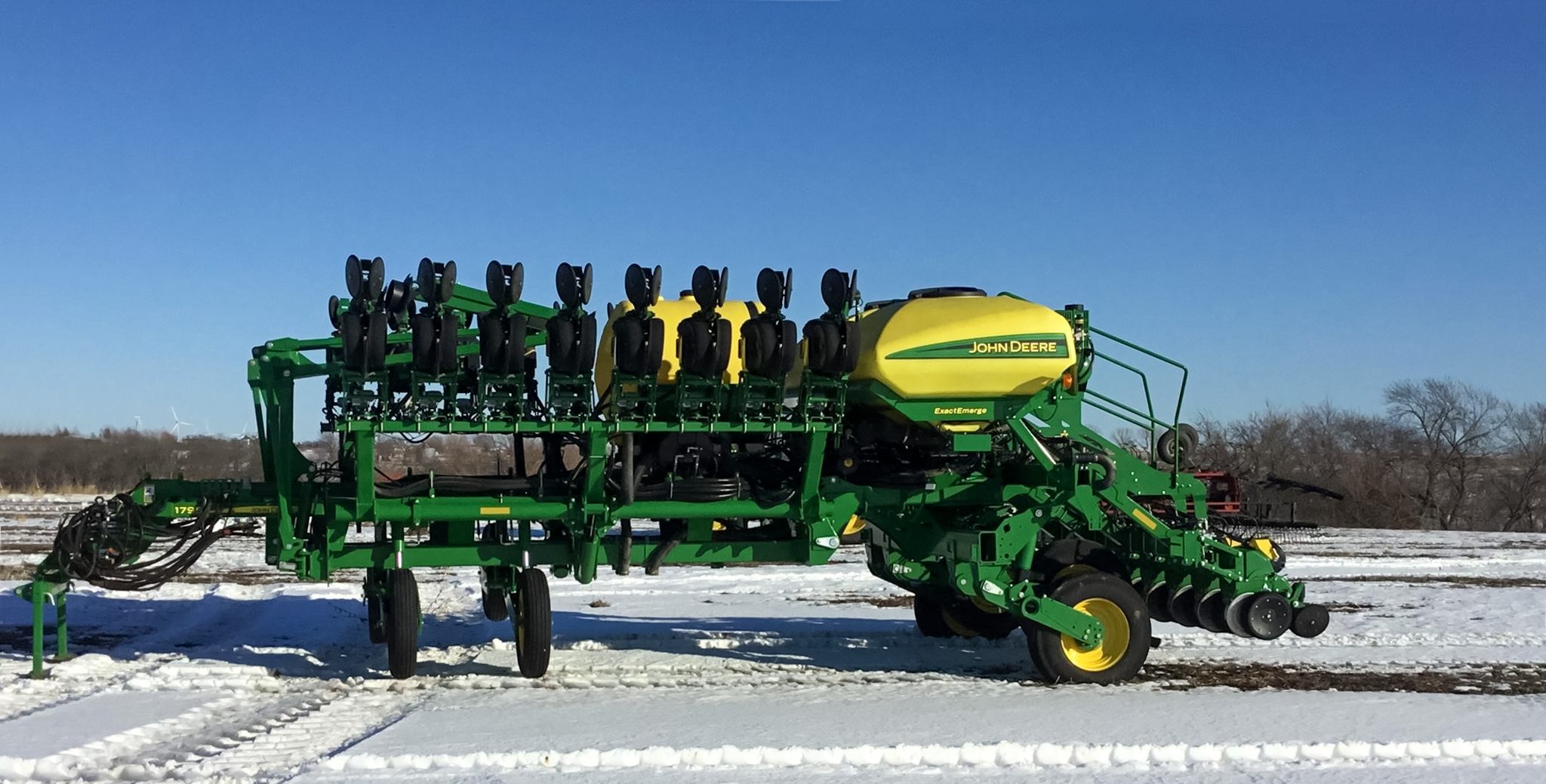
As farmers, the feeling of never having enough hours in a day is all too common, so the prospect of being able to plant up to 40% more acres per day1 with a high speed planting system will certainly catch your attention. However, you might be wondering, is a high speed planter really worth it?
In 2014, John Deere and Precision Planting each released their own high speed planting systems that promised to allow you to plant at up to 10 mph. Since then, John Deere’s ExactEmerge and Precision Planting’s SpeedTube, among other high speed planting systems, have been put to the test to determine if it’s really possible to achieve the same accuracy in seed placement at twice the speed of conventional planters.
Advantages of High Speed Planters
A planter row unit’s biggest impact on yield is a result of its seed skips or unplanted seeds. In a recent study conducted by Iowa State University2, during a side by side comparison, high speed planters produced statistical yield advantages ranging from 0 to 3 bushels per acre with improved seed spacing and reduced skips. The high speed planters produced consistent seed spacing at speeds up to 10 mph.
Yield potential is also influenced by planting date and planting within optimal planting windows. A high speed planter is one way to increase planter capacity and the amount of seeds planted within the optional planting window. High speed planting can make a considerable impact on daily planting productivity, allowing more crop to be planted during tight planting windows.
Disadvantages of High Speed Planters
While planting at higher speeds provides its benefits, correct downforce pressure, good ground contact, and increased closing wheel force become even more important when planting at higher speeds. Inadequate downforce typically results in seeds being placed too shallow, while excessive downforce can cause seed trench compaction. The reaction time of your planter’s downforce depends on what system is used to create the downforce. Typically, hydraulic systems are able to react quicker with adequate downforce versus springs or pneumatic systems. Good ground contact is also essential when planting at increased speeds as row unit bounce can be an issue. It is important for the row unit to remain in contact with the soil at all times to eliminate this issue.
With a high speed planter, everything will need to pick up the pace. If your seed-tender, fertilizer and machine operators aren’t keeping up with the increased planting speed, you’ll lose that time refilling your planter.
Utilizing a high speed planter with large soybeans can create some challenges. In a recent study from Iowa State University2, the Precision Planting SpeedTube seed delivery system was susceptible to plugging when planting large soybeans at rates exceeding 100 seeds/sec. However, there were no issues with John Deere ExactEmerge planter’s seed delivery system when planting the same size seed.
Planting Equipment Options
As the high speed planting market grows and matures, more options and technology become available including:
- John Deere ExactEmerge
- Precision Ag SpeedTube
- Case IH Early Riser
- Ag Leader SureSpeed
- Kinze Manufacturing TrueSpeed
Other Considerations
While high speed planting does allow you to maintain equipment size and plant more acres per hour with the same amount of labor, it may not be the only option for increasing productivity and managing narrow planting windows. Using a larger planter or operating multiple planters can reach the same goal. Whatever your goals, trust Tractor Zoom to provide you a comprehensive inventory of planting equipment to meet your needs.
References:
1. https://www.agriculture.com/machinery/farm-implements/planters/10-tips-f-highspeed-plting_231-ar47375
2. https://crops.extension.iastate.edu/blog/matt-darr-ryan-w-bergman/yield-considerations-high-speed-planting
